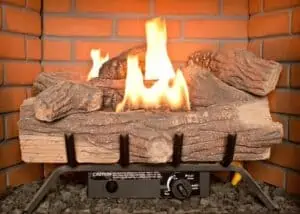How to Start a Gas Fireplace?
There are a few steps you must take before lighting a gas fireplace. These include: ensuring the unit has a working pilot light, finding the ignition switch, and adjusting the standby or intermittent pilot mode. You can even learn how to turn on a gas fireplace if you’re having a power outage.
(Searching in Google “gas fireplace maintenance near me“? Contact us today!)

Safety precautions before lighting a gas fireplace
There are certain safety precautions to follow before lighting a gas fireplace. These precautions can help prevent injury to yourself or to someone nearby. You should keep at least three feet of clearance around your fireplace, and no flammable objects should be left close to it. You should also check your carbon monoxide detector, and make sure it is working before lighting it. You should also have your fireplace inspected once a year. If you notice any smell of gas, turn off the gas and leave the room. Call a professional immediately.
Another precaution is to make sure the firebox is separated from your home with a durable glass panel. This will make the fireplace safer and more efficient. However, the glass panel can get quite hot, and you should always be careful not to touch it. If you have children or pets, you should ensure that your gas fireplace features a safety screen.
Finding the ignition button on a gas fireplace
If you’re having trouble lighting your gas fireplace, the first step is to find the ignition button. Gas fireplaces often have two separate buttons, one for the pilot light and one for the spark. To light the pilot, hold the ignition button down for 30 seconds or one minute, and then release it. In some cases, you may have to turn the control dial to the Pilot position first. Once the pilot light has lit, you can adjust the flame using a wall switch or remote control.
Depending on the type of gas fireplace, some may have an ignition button that is permanently mounted on the wall or controls. Some may have a manual or a user guide that will help you find it. Others may simply have a dial with a marking of the ‘Spark’ setting.
Using the intermittent or standing pilot mode on a gas fireplace
When using a gas fireplace, you need to decide whether to use the standing or intermittent pilot mode. Standing pilots are used on older models, while intermittent pilots are common on newer models. The intermittent pilot mode is more efficient because the pilot light does not have to be on all the time. It also eliminates the need to keep a pilot light lit between fires. However, you will need to connect your fireplace to the mains power line and have a backup battery for emergencies.
The intermittent setting is beneficial during warmer months because it prevents the firebox from freezing and makes it easier to start the firebox. It also keeps spider webs from blocking the pipes.
Turning on a gas fireplace during a power outage
During a power outage, your main concern will be staying warm. While there are many options to stay warm, relying solely on your electrical grid may not be the best option. Even big cities can experience lengthy periods without electricity. Fortunately, there are several ways to turn on your gas fireplace.
Many gas fireplaces have a battery compartment. You can place standard size batteries in this compartment to provide a spark for the pilot light. If your gas fireplace does not have a battery compartment, you can turn the gas valve manually. However, make sure to remove the batteries before the next power outage. Alternatively, you can use convection to heat your house.

